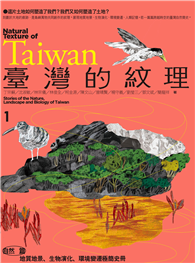This book is the first comprehensive introduction to the comics culture of Taiwan. Under martial law (1949-87), Taiwan’s comics culture was shaped by an intriguing mix: mainland Chinese traditions of political cartoons (manhua) and popular "picture books" (lianhuanhua) existed side by side with pirated and often obscured Japanese manga. Triangulating the sociology of culture, media history, and comics studies, the book investigates the hybridity of Taiwan comics with regard to the intricate relationship between transcultural while situated forms and socio-cultural contents against the backdrop of changes in comics’ cultural, symbolic, and economic capital. The main focus is on entertaining graphic narratives, that is, a type of comics that was ascribed a low cultural status in postwar Taiwan. The first chapter lays out the concept of comics that the book applies-comics as media rather than "art." It also highlights manga’s postwar visual grammar, which came to serve as a standard for entertaining graphic narratives in Taiwan. The following chapter surveys the genealogy of the media form from the period of Japanese colonial rule to the eve of the new censorship system in the 1960s. The third chapter scrutinizes the comics censorship system, which ultimately facilitated manga piracy and thereby interrupted the development of local comics production. Historical government documents and newspaper articles are analyzed to grasp the complicated exchange between artists, publishers, and the authorities. The fourth chapter looks into the different positions held by "mainlanders" and "islanders" with regard to publication venues (newspapers, magazines, and rental-store editions) and interpersonal networks. The last chapter shifts the focus to representational content with a special emphasis on graphic history and examines how the setting of comics narratives in an ahistorical "ancient China" related to contemporaneous official history. Thus, the book provides insights into Taiwan’s postwar history and controversial national identity through the lens of comics while introducing an extraordinarily heterogeneous media to researchers engaged in comics and manga studies.
| FindBook |
|
有 1 項符合
Timeea的圖書 |
 |
$ 1484 | Taiwan Comics: History, Status, and Manga Influx 1930s-1990s
作者:Lee / 譯者:Cosobea,Timeea 出版社:Stockholm University Press 出版日期:2024-11-05 語言:英文 規格:平裝 / 336頁 / 23.39 x 15.6 x 2.31 cm / 普通級/ 初版  看圖書介紹 看圖書介紹
|
|
|
圖書介紹 - 資料來源:博客來 評分:
圖書名稱:Taiwan Comics: History, Status, and Manga Influx 1930s-1990s
|











